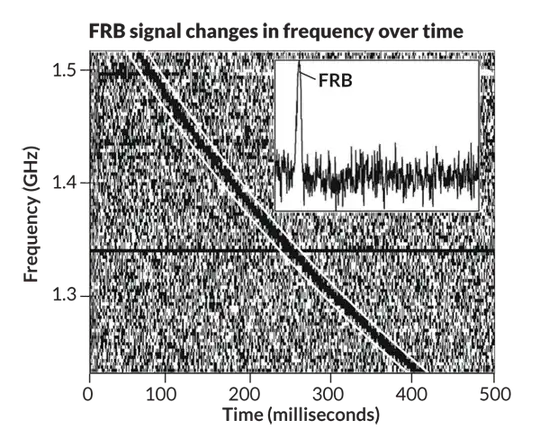The difference is phenomenological, and not entirely clear. Both are very short bursts of radio waves with very strong dispersions (changes in the arrival time as a function of frequency, likely due to moving through an ionized plasma) in a characteristic way (specifically proportional to the inverse frequency squared). The amount of dispersion suggests that the source was far away (i.e. extra-galactic) to explain the required amount of plasma.
There seem to be some systematic differences, however:
FRBs have much narrower, cleaner dispersion profiles (see attached images)
Perytons tend to be seen at a single location (Parkes in Australia), and often in multiple 'beams' of the telescope (which suggests that the source is nearby---i.e. within the atmosphere). FRBs have been observed at multiple locations sites, and always in a single beam.
It is now known that many (if not all) Perytons were produced by interference from nearby microwaves. This explanation cannot explain all FRB observations however.
NOTE: the Nature paper about a host galaxy you cite is extremely questionable. It's still a possibility that it's a true association, but a chance coincidence seems to be far more probably. More investigation is needed.
Characteristic FRB -- the 'Lorimer Burst', the first FRB discovered:
This shows frequency (y) vs. time (x), and the inset shows the signal "de-dispersed" --- just amplitude vs time, combining the different frequencies. The signal (dark swash) is very smooth and consistent --- it has the same width (in time) over all frequencies, and appears symmetric in time.

Some Perytons --- a collection from one of the first, published system analysis of them:
Note that the signal changes significantly over time. At high frequencies (early times) the pulse is very broad, but as it progresses (down and to the right) it fades, and narrows, and there are even some gaps in where you can see the signal. The edges are also not as well defined.


